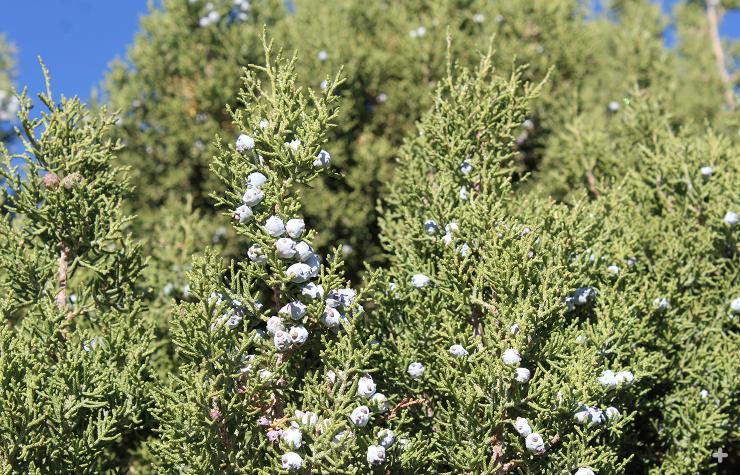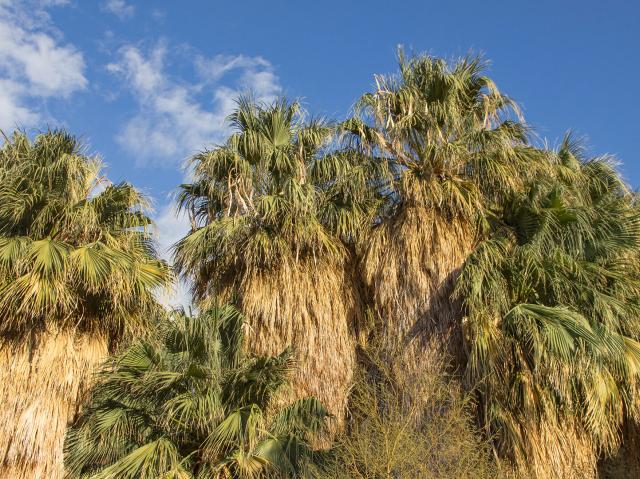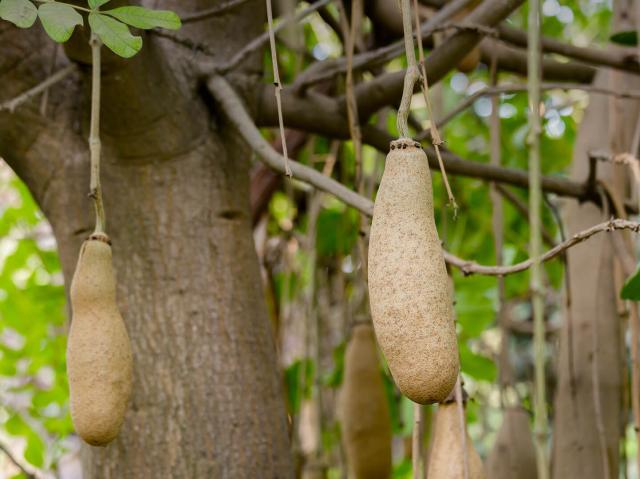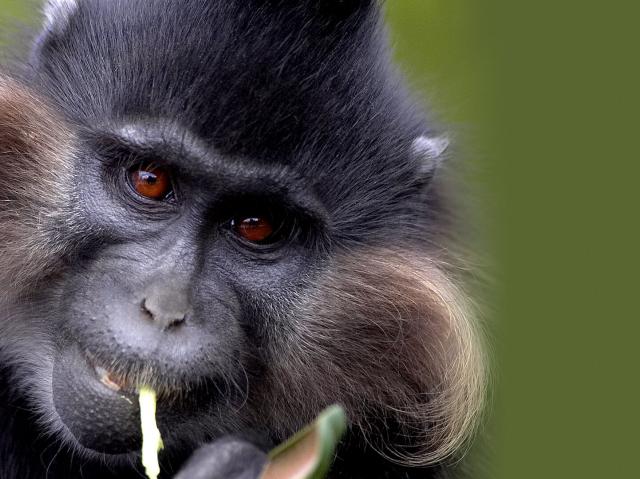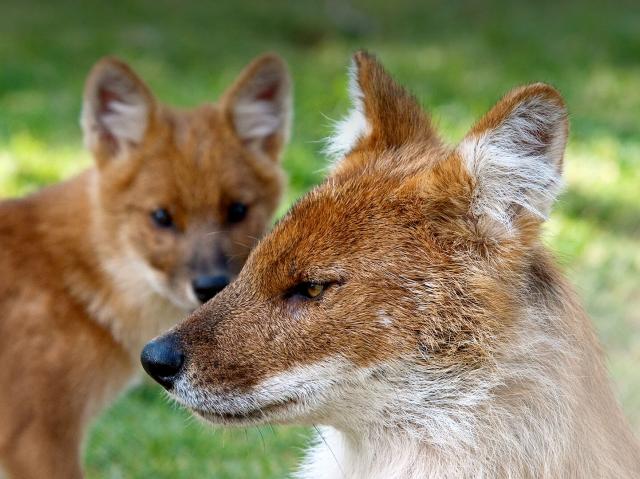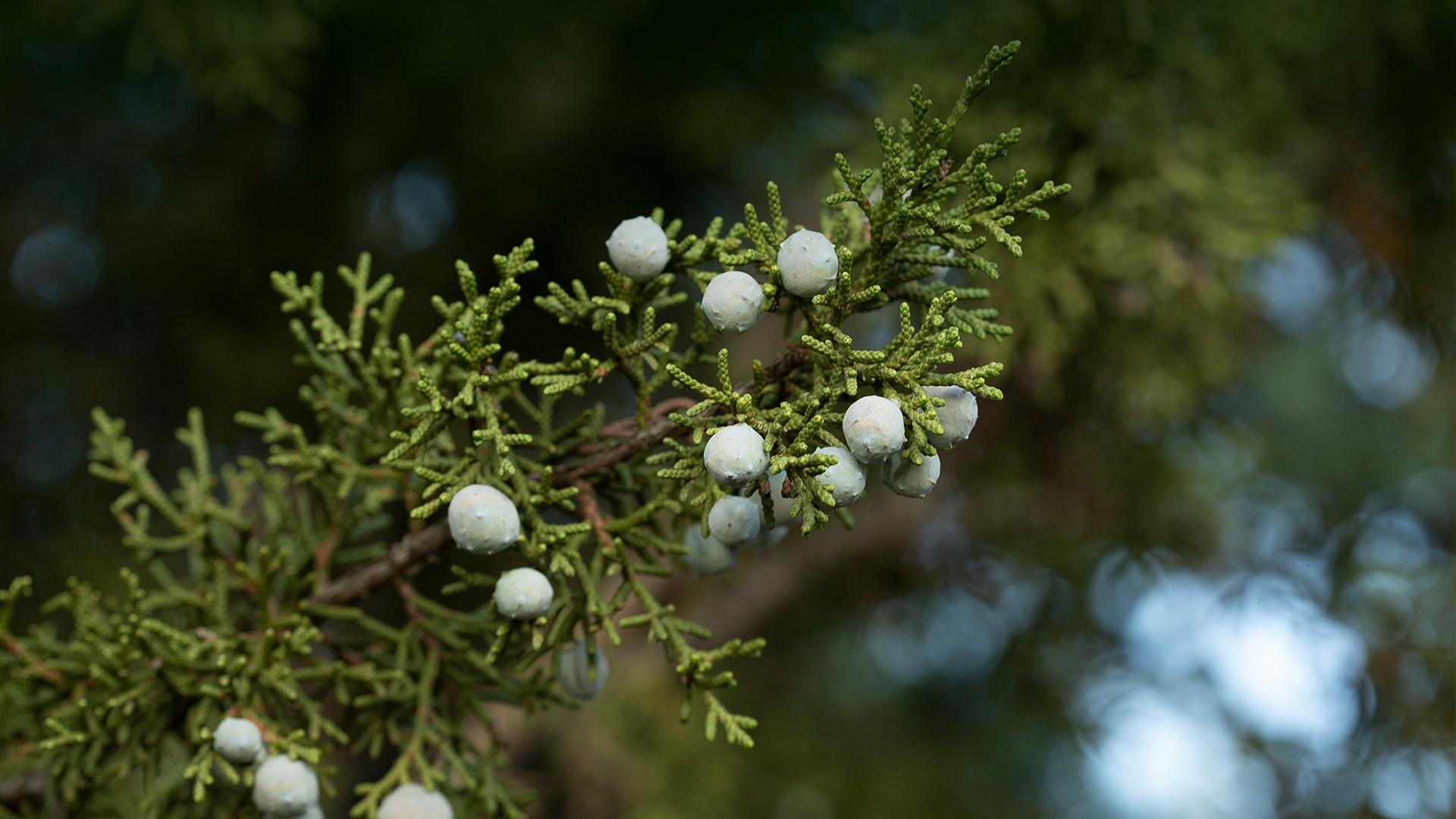
California Juniper

- Division: Tracheophyta
- Class: Pinopsida (conifers)
- Order: Pinales (pines)
- Family: Cupressaceae (cypresses)
- Genus: Juniperus
- Species: californica

OVERVIEW
Descending the eastern slopes of California’s Peninsular Ranges—the desert side—is a landscape known as “desert transition.” Here, California junipers often stand alongside pinyon pines, and make the most of fog and clouds to capture moisture. Pinyon-juniper woodlands are typical of southwest desert transition plant communities, woven among an interesting mix of chaparral, desert, and montane plants. In general, you find California juniper on dry, rocky slopes, ridges, and valleys where soils are porous, rocky, coarse, or sandy—places where most plants don’t thrive.
Tough trees, California junipers grow not only on dry slopes and high desert, but many other plant communities when given the chance; you can find them in open woodlands, sage scrub, desert chaparral, montane forest, and even Joshua tree woodland. All these regions have mild, sunny winters, and that’s when junipers get their moisture—about 10 to 40 inches from December to April. Summers are hot and dry. You can encounter California junipers in habitats like this from northern California into Nevada; Arizona; and Baja California, Mexico. They provide food and shelter for deer, elk, pronghorn, and native turkeys. Birds and smaller mammals eat the “berries” (actually female cones).
CHARACTERISTICS
Depending on where it grows—water is a limiting factor—a mature California juniper can be 3 feet (1 meter) tall—or it can be 40 feet (12 meters) tall. The trunk is usually crooked and forked or multistemmed, with shredding, grayish bark. Fragrant, tiny (one to two-millimeter), scale-like leaves are light green to bluish-gray. Conifers like junipers produce seeds and pollen in protected, tightly clustered structures we know as cones, and a California juniper tree is either a male or a female.
Bluish or brown juniper “berries” are actually female cones, which are about 0.25 to 0.5 inches (6 to 13 millimeters) in diameter. Male trees grow much smaller (two- to four -centimeter) cones that release pollen in early spring. Wind disperses pollen to female cones, and the seed (usually one but sometimes two) inside a female cone takes about nine months to mature. By then, the plump “berries” attract birds and mammals that eat the cones and spread the seeds.
CULTIVATION
You’ll need plenty of room to grow a California juniper, because most trees grow wider than they are tall, and they generally don’t allow undergrowth. This juniper is a good choice for hedges, screens, and stabilizing slopes, especially if you live in a dry area that doesn’t get below 10 degrees Fahrenheit (-12 degrees Celsius) in winter. Plant it in full sun or limited shade, in just about any kind of low-nutrient soil. Once it’s established, this drought-tolerant tree will need very little or no supplemental water, and no soil amendments. A tree can live for 50 to 150 years.
CONSERVATION
This plant is not fire-adapted—it is highly flammable, and it does not sprout after a fire. Experts report that a stand of California junipers could take 125 years or more to recover from a fire. This poses a risk to some stands of mature junipers, but fortunately, many other stands of these trees are in rocky places where fire is unlikely. The International Union for Conservation of Nature (IUCN) classifies the California juniper as a species of Least Concern. Feral goats destroyed nearly all the junipers (and other plants) on Guadalupe Island (Baja California, Mexico). The grazers were eradicated from the island in 2007, and trees are once again populating the island.
NAMES
J. californica is sometimes called “desert white cedar,” although true cedars are in the related genus Cedrus.
BIG TREE
The biggest California juniper on record measures 44 feet (15 meters) tall, with a crown spread of 53 feet (18 meters) and a trunk circumference of 10 feet ( 3 meters).
HOSTED BY…
California junipers are a host plant for Sequoia sphinx moth caterpillars.
MALE AND FEMALE
While most California junipers are either male or female, about two percent produce both male and female cones on the same plant.
USES
Early Indigenous North American tribes used the wood of California juniper for bows, and the leaves and berries for food and medicine. Today, ranchers sometimes use juniper wood for fence posts.
GIN
Gin gets its name from the Dutch word for “juniper”—jenever. Juniper berries are the primary botanical component that gives gin its distinctive bouquet and flavor. However, the berries typically used to flavor gin are from the common juniper J. communis, not the California juniper.


